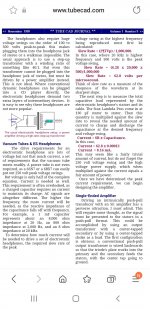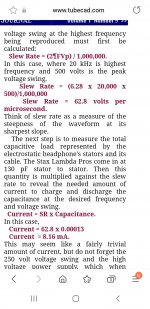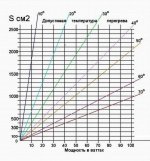Unfortunately you have not understood my postings. I have made many amplifiers (mainly SS) using aluminium heatsinks and various combinations of machined cases. As stated in my first linked post on the current method of building cases it is easy, particularly for DIYers who wish to build their own. The first reason I experimented with porous ceramic was because they are small, effective and can be placed around the case design which gives flexibility in case design and layout. The case is built of rectangles of sheet material (3mm aluminium alloy) and requires no machining, drilling or tapping. Aluminium extrusions are not always flat which has to be corrected when used as the sides.The heat sinks need to radiate heat as well as produce air flow. There is not enough ventilation by having small slots in the top of the case and sides covering the heat sinks on each side.
You would do better to use aluminium extrusions for the sides of the case. This was my approach with a JLH 15Watt Class A design where the dissipation per channel is 88W and case temperatures of the output transistors is limited to 60 degrees Celcius.
These heat sink extrusions are 300 mm long and anodised black which helps heat dissipation and I recommend having this paint process done for your project. All the same there is a large ventilation hole in my case bottom with cross hatch aluminium cover on the inside to prevent entry of insects and vermin and a similar pattern sheet on the cover for the top.
I am using a 300 VA power transformer to power this system and it gets quite hot. This resides in a separate case with heat sink and voltage regulators for the whole two channels. This is mounted horizontally in the separate case and there is an umbilical supply cord and plug connection to the amplifier case. This removes a heat source and any source of mechanical vibration/ noise from operation of the toroid. The supply rails are +/- 22V and the regulators are electronicallshort circuit protected. These are mounted on a heat sink forming part of the back of this separate case. I drilled small holes in the bottom of this case to allow air to flow around the toroid.
The finished amplifier is smaller, lighter and does more than previous class-A power amplifiers I have built.
No doubt you have built many better amplifiers than mine, but I assure you this method works and like the bumblebee carries on flying.Absolutely!
Even the datasheet provided shows Aluminium being superior on all counts and they don't even talk about anodized aluminium:
https://www.gabrian.com/anodized-aluminum-heatsinks-what-you-need-to-know/
Anodized aluminium has a thin porous layer of aluminium oxide on top of it which technically is one of the finest ceramic outhere.
By the way..Peltier effects have alumium oxide plates for thermal contact and electrical isolation.Guess why?
Then 66watts dissipation for headphones amplifiers looks like one more overkill and utterly useless application ...
Ridiculous...but that's the world we're living in.
https://m.pt.aliexpress.com/item/1005004657102105.html?pdp_npi=2@dis!RON!RON 141.61!RON 84.95!!!!!@2103222016707541594418444ead90!12000030002828250!btf&_t=pvid:4a51f61c-3ae4-4257-ab72-576d0d5b81d8&afTraceInfo=1005004657102105__msite__c_ppc_item_bridge__xxxxxx__1670754159&spm=a2g0n.ppclist.product.2&gatewayAdapt=gloPc2braMsite
Are you not familiar with top level class-A electrostatic headphone amplifiers where voltages of around 500vdc and output stage currents of 20mA are necessary?
Have you compared the heat dissipation of a simple aluminum case and a modified one in practice?The finished amplifier is smaller, lighter
Is it possible to get by with fewer stickers in the hottest places?
If the ceramic is porous, and has much better air flow inside between its particles, it makes me doubt about thermal conductivity to farthest places respect to the point in which the semicon is placed. Thus I wonder about the effectiveness of heat radiation by those far parts of the "heat sink". Could you measure and compare the thermal gradient across aluminum and ceramic tiles of comparable dimensions?
This isn't a criticism, only a question.
This isn't a criticism, only a question.
My amp used around 7mA iddle current although measurements showed 3.5mA being good enough...Are you not familiar with top level class-A electrostatic headphone amplifiers where voltages of around 500vdc and output stage currents of 20mA are necessary?
Let's just not compare apples to oranges...you're discussing here a low impedance dynamic speaker amplifier.
Attachments
Last edited:
The air flow during convection depends on the temperature gradient, the flow resistance and the resistance of the diffusers (grilles) from below and from above (natural cooling). Thermal radiation at a temperature of 50-70 "C makes a small contribution.
Thermal resistors are connected in series. Some deterioration in the heat transfer of the sticky base of ceramic radiators should be expected.
For ordinary aluminum radiators (or aluminum case).
Thermal resistors are connected in series. Some deterioration in the heat transfer of the sticky base of ceramic radiators should be expected.
For ordinary aluminum radiators (or aluminum case).
Attachments
Last edited:


